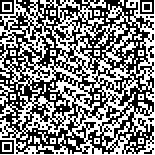程瑞动,叶祥明,杨婷,等.电针治疗对神经病理性疼痛中嘌呤能受体的影响及其作用机制研究[J].中华物理医学与康复杂志,2019,41(1):13-17
扫码阅读全文

|
| 电针治疗对神经病理性疼痛中嘌呤能受体的影响及其作用机制研究 |
|
| |
| DOI:DOI:10.3760/cma.j.issn.0254-1424.2019.01.003 |
| 中文关键词: 电针 神经病理性疼痛 嘌呤能受体 镇痛 |
| 英文关键词: Electroacupuncture Neuropathic pain Purinergic receptors Analgesia |
| 基金项目:国家自然科学基金青年基金(81601965);浙江省中医药科技计划(2014ZB009);浙江省自然科学基金(LY15H170002);浙江省医药卫生科技计划(2016KYB014) |
|
| 摘要点击次数: 6444 |
| 全文下载次数: 8305 |
| 中文摘要: |
| 目的 观察电针对CCI大鼠脊髓背角小胶质细胞激活和P2X4受体表达的影响,并进一步探讨同时干预CCPA特异性作用受体A1受体与P2X4受体是否在电针痛觉调制中存在强化镇痛效应。 方法 选取成年清洁级健康Sprague-Dawley(SD)雄性大鼠40只,体重150~180 g。按随机数字表法分为假模组、CCI模型组、电针组、腺苷A1受体激动剂2-氯环戊腺苷(CCPA)组和电针CCPA组,每组大鼠8只。CCI模型组、电针组、CCPA组和电针CCPA组均建立大鼠CCI模型,假模组仅暴露坐骨神经。造模成功后,CCPA组和电针CCPA组均行足三里和阳陵泉两穴位注射CCPA 20 μl,0.1 mm/L;电针组和电针CCPA组(穴位注射后)则接受电针治疗;假模组和CCI模型组不做CCPA和电针干预。于造模前和造模成功20 d后,对5组大鼠进行痛阈测定,包括机械缩足反射阈值(MWT)和热缩足反射潜伏期(TWL)。于痛阈测定结束后,即刻处死大鼠,取出L4~L6脊髓段,采用双标免疫组织化学染色法分析5组大鼠每个P2X4R、OX42阳性细胞的平均荧光强度。OX42和P2X4受体的荧光密度与痛阈差值的相关性采用Spearman秩相关系数进行分析。 结果 造模成功20 d后,CCI模型组大鼠的MWT值和TWL值均显著低于假模组、电针组、CCPA组和电针CCPA组,差异均有统计学意义(P<0.01)。造模成功20 d后,CCI模型组大鼠脊髓组织中P2X4和OX42的表达显著高于假模组、CCPA组、电针组和电针CCPA组,差异均有统计学意义(P<0.01)。通过分析OX42和P2X4受体的荧光密度与痛阈差值的相关性,确定OX42和P2X4受体的荧光密度与痛阈差值呈明显的正相关,相关系数分别为0.907、0.717,差异均有统计学意义(P<0.01)。 结论 CCI后大鼠痛觉过敏与脊髓背角P2X4受体表达和小胶质细胞的活化相关,CCPA和电针治疗均可降低P2X4受体的表达,抑制小胶质细胞的活化,同时干预CCPA作用受体A1受体和P2X4受体可增强电针的镇痛效应。 |
| 英文摘要: |
| Objective To elucidate the mechanism underlying eletroacupuncture′s (EA′s) amply-documented analgesic effect. To observe its effect on the pain threshold and on the expression of P2X4 receptor and microglia activation in the spinal cords of rats with neuropathic pain. To demonstrate whether or not interfering with A1 receptors and P2X4 receptors at the same time could enhance the analgesic effect. Methods A total of 40 Sprague-Dawley rats weighing 150 to 180 g were randomly divided into a sham group, a CCI group, an EA group, a 2-chloro-N(6)-cyclopentyladenosine (CCPA) group and a CCPA+EA group, each of 8. Chronic constriction injury (CCI) was induced successfully in the rats of all groups except the sham group. Five days later, EA and 20 μL injections of 0.1 mm/L CCPA were applied to the rat analogues of the Zusanli (ST36) and Yanglingquan (GB34) acupoints once a day for 15 days for the rats in the appropriate groups. The mechanical withdrawal threshold (MWT) and the thermal withdrawal latency (TWL) were measured before the CCI operation and 20 days afterward. L4-L6 spinal cord tissue was then resected and the fluorescence intensity of P2X4 and OX42 receptors was detected using double label immunohistochemical staining. The correlation between the mean fluorescence intensity and the pain threshold gap was analyzed. Results The average MWT and TWL of the CCI group were significantly lower than in the other four groups. The expression of P2X4 receptor and OX42 in the spinal cord increased significantly in the CCI group compared to the other four groups. There was significant correlation between the mean fluorescence intensity of P2X4 and OX42 receptors and the gap in pain threshold, with correlation coefficients of 0.907 and 0.717 respectively. Conclusion P2X4 receptor and microglia activation might be involved in the development of neuropathic pain. CCPA and EA can inhibit the activation of microglia and reduce the activity of P2X4 receptors. The interaction between A1 receptors and P2X4 receptors can strengthen the analgesic effect of EA. |
|
查看全文
查看/发表评论 下载PDF阅读器 |
| 关闭 |